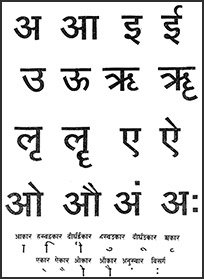Tya: 7 definitions
Introduction:
Tya means something in Hinduism, Sanskrit, Buddhism, Pali, Marathi. If you want to know the exact meaning, history, etymology or English translation of this term then check out the descriptions on this page. Add your comment or reference to a book if you want to contribute to this summary article.
In Hinduism
Vyakarana (Sanskrit grammar)
Source: Wikisource: A dictionary of Sanskrit grammar1) Tya (त्य).—tad. affix त्य (tya) standing for त्यक् (tyak) and त्यप् (tyap) which see below;
2) Tya.—A technical term for प्रत्यय (pratyaya) (a suffix or a termination) in the Jainendra Vyakarana.

Vyakarana (व्याकरण, vyākaraṇa) refers to Sanskrit grammar and represents one of the six additional sciences (vedanga) to be studied along with the Vedas. Vyakarana concerns itself with the rules of Sanskrit grammar and linguistic analysis in order to establish the correct context of words and sentences.
Languages of India and abroad
Pali-English dictionary
Source: Sutta: The Pali Text Society's Pali-English DictionaryTya, (Sk. tya°, nt. tyad; perhaps to Gr. sήmeron to-day, sh_tes in this year) base of demonstr. pron. =ta°, this, that; Loc. sg. tyamhi J. VI, 292; Loc. pl. fem. tyāsu J. V, 368 (Com. tāsu). (Page 307)

Pali is the language of the Tipiṭaka, which is the sacred canon of Theravāda Buddhism and contains much of the Buddha’s speech. Closeley related to Sanskrit, both languages are used interchangeably between religions.
Marathi-English dictionary
Source: DDSA: The Aryabhusan school dictionary, Marathi-Englishṭyā (ट्या).—or-
--- OR ---
tyā (त्या).—or-
Marathi is an Indo-European language having over 70 million native speakers people in (predominantly) Maharashtra India. Marathi, like many other Indo-Aryan languages, evolved from early forms of Prakrit, which itself is a subset of Sanskrit, one of the most ancient languages of the world.
Sanskrit dictionary
Source: Cologne Digital Sanskrit Dictionaries: Cappeller Sanskrit-English DictionaryTya (त्य).—([pronoun]-st.) that (person or thing); [often] = the defin. article; [neuter] tyad (q.v.).
Source: Cologne Digital Sanskrit Dictionaries: Monier-Williams Sanskrit-English DictionaryTya (त्य):—See tyad.
[Sanskrit to German]
Sanskrit, also spelled संस्कृतम् (saṃskṛtam), is an ancient language of India commonly seen as the grandmother of the Indo-European language family (even English!). Closely allied with Prakrit and Pali, Sanskrit is more exhaustive in both grammar and terms and has the most extensive collection of literature in the world, greatly surpassing its sister-languages Greek and Latin.
See also (Relevant definitions)
Starts with (+132): Tyabe, Tyaca, Tyad, Tyada, Tyadadi, Tyadadividhi, Tyadam, Tyadayani, Tyadrish, Tyadrisha, Tyae, Tyag, Tyaga, Tyagabhoga, Tyagacitta, Tyagagata, Tyagagraha, Tyagala, Tyagamana, Tyagamaya.
Ends with (+1547): Abhayajatya, Abhidrutya, Abhihatya, Abhihritya, Abhijatasahitya, Abhijatya, Abhijitya, Abhilakshyikritya, Abhiprayasamgatya, Abhipretya, Abhisamhatya, Abhisamhritya, Abhisamskritya, Abhishastya, Abhishrutya, Abhishvaitya, Abhisritya, Abhivyahritya, Abhyabhistutya, Abhyaghatya.
Full-text (+595): Anapatya, Tatratya, Shitya, Nitya, Anitya, Amutratya, Duretya, Nihsatya, Sapatya, Adritya, Vaikritya, Somadaivatya, Patya, Dvisitya, Ghatya, Sambhritya, Itya, Kvatya, Trisitya, Stutya.
Relevant text
Search found 24 books and stories containing Tya, Ṭyā, Tyā; (plurals include: Tyas, Ṭyās, Tyās). You can also click to the full overview containing English textual excerpts. Below are direct links for the most relevant articles:
Rig Veda (translation and commentary) (by H. H. Wilson)
Cidgaganacandrika (study) (by S. Mahalakshmi)
Verse 89 [Rāva (Nāda) emerges from Śūnyadhāma by dynamism of Śakti] < [Chapter 3 - Third Vimarśa]
Vedic influence on the Sun-worship in the Puranas (by Goswami Mitali)
Part 31 - Symbolic relevance of the Horse in Sun-worship < [Chapter 2 - Salient Traits of the Solar Divinities in the Veda]
Mudrarakshasa (literary study) (by Antara Chakravarty)
2.7. Use of Rūcirā metre < [Chapter 4 - Employment of Chandas in Mudrārākṣasa]
The Tattvasangraha [with commentary] (by Ganganatha Jha)
Verse 910-911 < [Chapter 16 - Examination of the Import of Words]
The Skanda Purana (by G. V. Tagare)
Chapter 85 - Greatness of Sannihitā < [Section 1 - Prabhāsa-kṣetra-māhātmya]